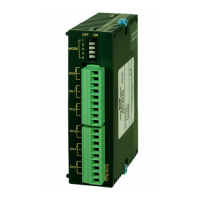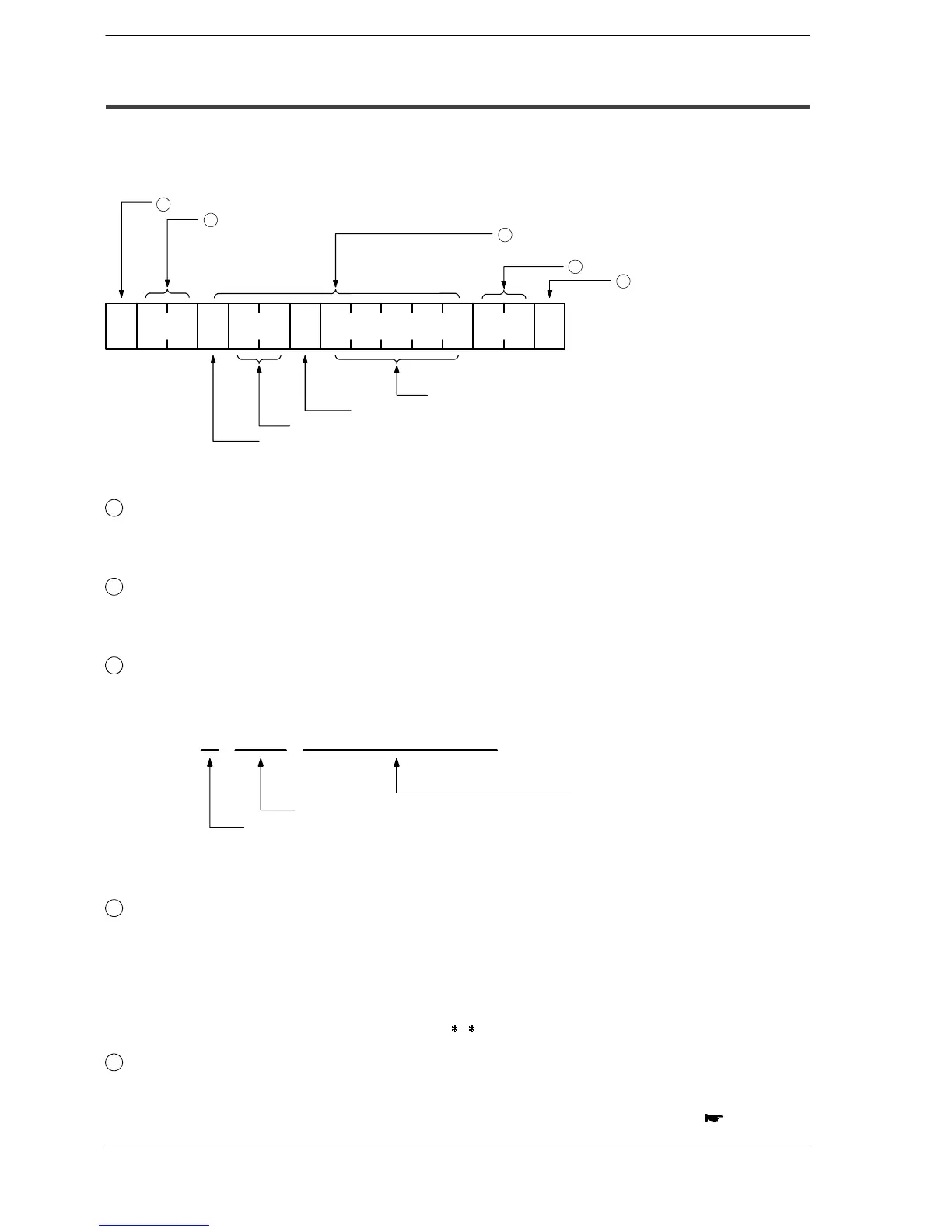FPΣ
8.1 Computer Link
8-5
8.1.3 Format of Command and Response
Command message
Items necessary for commands should be noted in the text segment, and the unit
number specified before sending the command.
%
or
<
01#RCSR0001
C
R
1
Start code
2
Unit No. of destination (01 to 32, Decimal)
3
Text (Content is specified based on type of
command)
4
Check code (BCC, Hexadecimal)
5
End code
(Two-
digit)
Target that reads the value (internal relay R1)
Specified item (specifies that only 1 point should be read)
Command name (e.g. Read contact area)
Command code (Indicates that this is a command)
(One-
digit)
Figure 142: FPΣ Command message (format)
1
Start code (Header)
Commands must always have a “%” (ASCII code: H25) or a “<” (ASCII code: H3C) at the
beginning of a message.
2
Unit No.
The unit number of the PLC to which you want to send the command should be specified.
When using 1:1 communication, “01” should be specified.
3
Text
The content differs depending on the command. The content should be noted in all
upper-case characters, following the fixed formula for that particular command.
%
01# RC SX0001
C
R
1D
Specification and
data to be written
Command name
Command code [#]
(ASCII code: H23)
Figure 143: FPΣ Command message (text)
4
Check code
This is the BCC (block check code) used to detect errors using horizontal parity. It should be
created so that it targets all of the text data from the start code to the last text character.
The BCC starts from the start code and checks each character in sequence, using the
exclusive OR operation, and replaces the final result with character text. It is normally part of
the calculation program, and is created automatically.
The parity check can be skipped by entering “
” (ASCII code: H2A2A) instead of the BCC.
5
End code (Terminator)
Messages must always end with a “
C
R
” (ASCII code: H0D).
next page

